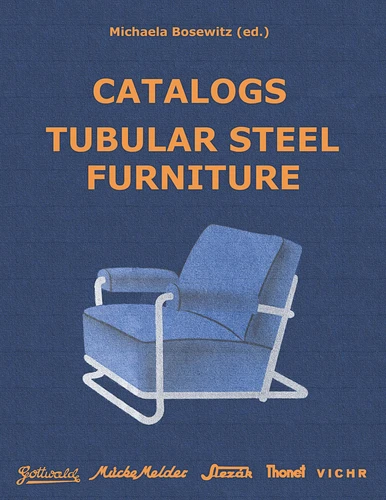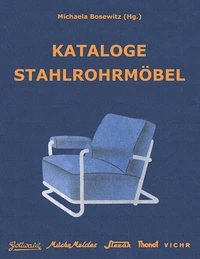Catalogs Tubular Steel Furniture. Gottwald, Mücke-Melder, Slezák, Thonet-Mundus, Vichr & Co.
Par :Formats :
Disponible dans votre compte client Decitre ou Furet du Nord dès validation de votre commande. Le format ePub est :
- Compatible avec une lecture sur My Vivlio (smartphone, tablette, ordinateur)
- Compatible avec une lecture sur liseuses Vivlio
- Pour les liseuses autres que Vivlio, vous devez utiliser le logiciel Adobe Digital Edition. Non compatible avec la lecture sur les liseuses Kindle, Remarkable et Sony
 , qui est-ce ?
, qui est-ce ?Notre partenaire de plateforme de lecture numérique où vous retrouverez l'ensemble de vos ebooks gratuitement
Pour en savoir plus sur nos ebooks, consultez notre aide en ligne ici
- Nombre de pages184
- FormatePub
- ISBN978-3-7504-6736-1
- EAN9783750467361
- Date de parution19/02/2020
- Protection num.Digital Watermarking
- Taille41 Mo
- Infos supplémentairesepub
- ÉditeurBooks on Demand
Résumé
The period between the two world wars saw a revolution in the use of new materials in building and design: concrete and steel. Tubular steel came into use for household furnishings through designers such as Marcel Breuer, Mart Stam and Ludwig Mies van der Rohe. Maximum utility, simple, clear forms and low price levels were considered the essentials of well-designed consumer goods. The fashionable modern appeal, functionality and versatility of tubular steel furniture helped spread its popularity, and it became a symbol of modernism.
Among the major Czech producers of metal furniture were the factories of Hynek Gottwald, Mücke-Melder, Thonet-Mundus, Slezák and Vichr & Co.
They offered furniture and interior furnishings for everyday use. The originals of these catalog reprints date from the heyday of tubular steel furniture production: the 1930s. They show the diversity of the range, with hundreds of models of chairs, tables and similar furniture used in households, schools, hospitals, stores and gardens. 5 catalogs, 184 pages
They offered furniture and interior furnishings for everyday use. The originals of these catalog reprints date from the heyday of tubular steel furniture production: the 1930s. They show the diversity of the range, with hundreds of models of chairs, tables and similar furniture used in households, schools, hospitals, stores and gardens. 5 catalogs, 184 pages
The period between the two world wars saw a revolution in the use of new materials in building and design: concrete and steel. Tubular steel came into use for household furnishings through designers such as Marcel Breuer, Mart Stam and Ludwig Mies van der Rohe. Maximum utility, simple, clear forms and low price levels were considered the essentials of well-designed consumer goods. The fashionable modern appeal, functionality and versatility of tubular steel furniture helped spread its popularity, and it became a symbol of modernism.
Among the major Czech producers of metal furniture were the factories of Hynek Gottwald, Mücke-Melder, Thonet-Mundus, Slezák and Vichr & Co.
They offered furniture and interior furnishings for everyday use. The originals of these catalog reprints date from the heyday of tubular steel furniture production: the 1930s. They show the diversity of the range, with hundreds of models of chairs, tables and similar furniture used in households, schools, hospitals, stores and gardens. 5 catalogs, 184 pages
They offered furniture and interior furnishings for everyday use. The originals of these catalog reprints date from the heyday of tubular steel furniture production: the 1930s. They show the diversity of the range, with hundreds of models of chairs, tables and similar furniture used in households, schools, hospitals, stores and gardens. 5 catalogs, 184 pages





